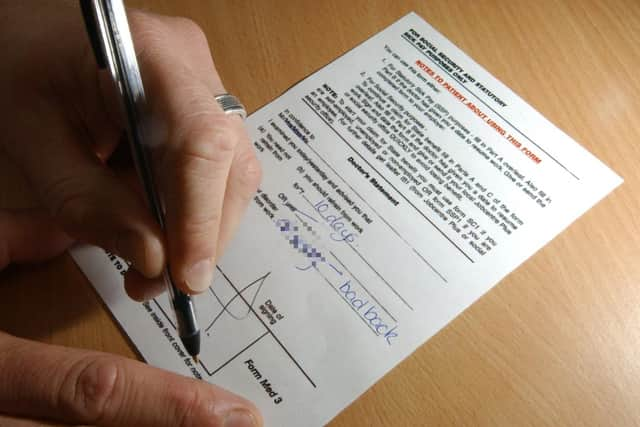Fife Council’s new £800,000 initiative to tackle highest ever staff absences
and live on Freeview channel 276
The local authority revealed that in 2021/22 the average number of working days lost per employee reached 13.26. Now it is set to ask councillors to agree to establishing an Attendance Support Unit to help managers and supervisors provide more proactive and effective support when workers are unwell.
The significant investment is expected to deliver benefits by getting staff back to work earlier, reducing the costs of cover, and improving productivity s departments return to full strength. A similar model was successful in reducing absence levels previously.
Advertisement
Hide AdAdvertisement
Hide AdCouncillor David Ross, leader of the minority Labour administration, said that absence rates are increasing in councils and businesses across the country - but the figures in Fife were a major cause for concern.


“These are the highest staff absence levels ever reported in our organisation,” he said. “It’s a reflection of the tougher working conditions, financial challenges and stretched resources across our public services post-pandemic. Not just council services, but the health services that support our workforces too.
“More staff are being signed off long-term sick, particularly with mental health and musculoskeletal issues, and those absences are now lasting much longer. That not only affects our ability to maintain service levels, it puts more pressure on remaining colleagues, especially when many teams are already short-staffed due to national skills shortages. It can also be costly if we have to buy in agency cover for essential services.
“We know the NHS is under strain and mental health and physio services can’t cope with demand – people are waiting longer for treatment which is exacerbating the problem. As a Council we have no control over that, but we must act now and do what we can to improve employee absence rates.”
Advertisement
Hide AdAdvertisement
Hide AdThe recommendation from the council’s HR department to create the new unit will go before councillors at this week’s Cabinet meeting which will be attended by Ken Gourlay, the local authority’s newly appointed chief executive.
Mr Gourlay said: “It’s clear we can’t maintain the status quo. We need to halt and reverse this trend in absence, for the good of our staff as well as the public we serve. As we look at this report it’s also important to remember that this is not a reflection of the dedication of our workforce.”He added; “This is about people - our friends and relatives – who are working in physical jobs with hard shifts, like waste operations, adult services and care at home. Working across the care sector and in community support roles has been additionally stressful, of course, over these past few years.
“We use the average number of working days lost as an indicator of trends, but the average is certainly not the norm for most staff. The majority of our employees are rarely off sick and, when they are, it’s for a relatively short period of time. The number of short-term absences recorded has also increased, so it’s something we’ll look at, but the main issue we face is how to bring people with long-term health conditions back into the workplace sooner.”